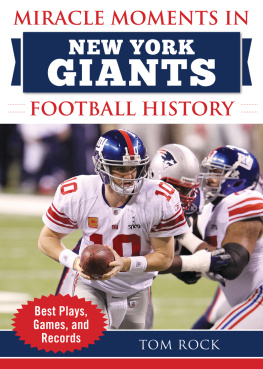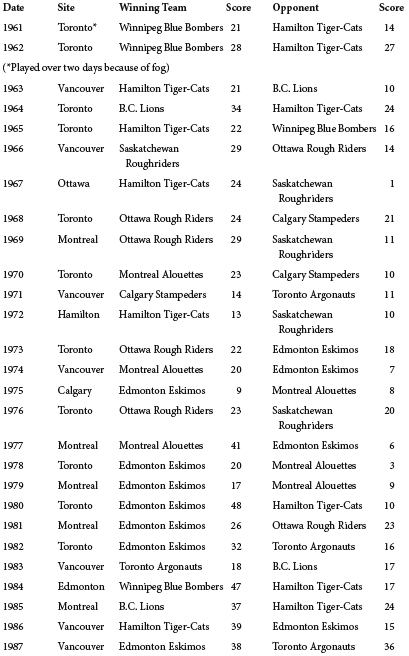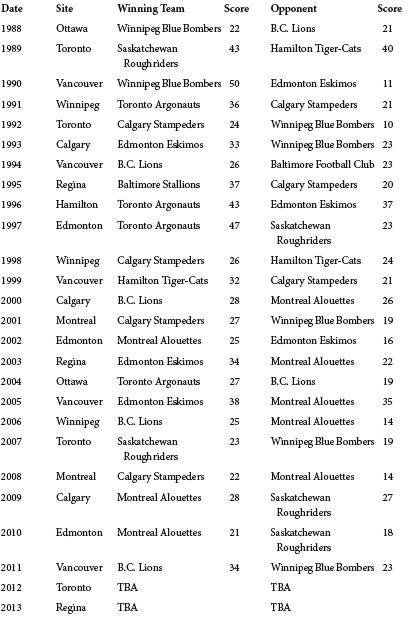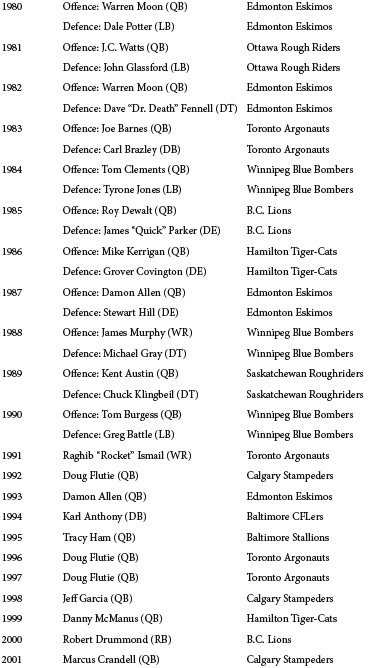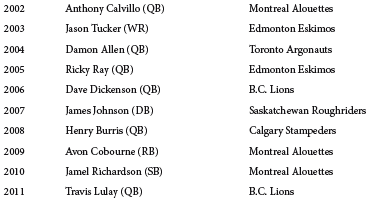1
1909: Undisputed Rugby Champions of the Dominion
The greatest of traditions often stem from the humblest of beginnings, and the Grey Cup is no exception. Born in the mid-19th century, Canadian football struggled to define itself against its parent, rugby, and underwent decades of changes in rules and scoring as coaches and players worked to refine the game and establish standards that would enable the best team in the Dominion to rise to the top.
The first organized competitions were established in 1883 when the Ontario Rugby Football Union (ORFU) and the Quebec Rugby Football Union (QRFU) were formed. The following year these two unions came together to form the Canadian Rugby Football Union (CRFU), and at the end of that season the Montreal club defeated the Toronto Argonauts 300 to win the first ever CRFU championship. Despite the interest and fervor, the CRFU collapsed before the end of the decade. It was reorganized in 1891 as the Canadian Rugby Union, but the ground beneath it continued to shift.
The proverbial game-changer came in 1903 when the ORFU became the first major competition to adopt the rules that University of Toronto coach Thrift Burnside had derived from those already in place in the United States. The adoption of the Burnside Rules was considered a radical move, but by 1906 they were in force throughout Ontario and Quebec and it was from these very rules that the modern Canadian football code evolved. From this point the game evolved more rapidly.
In September 1907, the Hamilton Tigers and the Toronto Argonauts of the ORFU joined with the Montreal Foot Ball Club and Ottawa Rough Riders of the QRFU to form an elite competition: the Interprovincial Rugby Football Union (IRFU), also known as the Big Four. On December 1 of that year the Montreal Foot Ball Club defeated the Peterborough Quakers and won the first-ever Dominion Championship. In 1908, the Hamilton Tigers won the championship, defeating the University of Torontos Varsity Blues. These matches were the genesis of todays Grey Cup.
Albert Henry George Grey, the grandson of a former British prime minister and the son of Sir Charles Grey, who served for a time as a member of the Special Council of Lower Canada, was born in 1851 in London. In his early career he served as a member of British Parliament, and at the age of 43 he inherited the Earldom Grey. He was also one of the first four trustees responsible for the administration of the funds that established the Rhodes Scholarship. In 1904, King Edward VII appointed Grey the ninth governor general of Canada, succeeding his brother-in-law, Lord Minto.
As governor general, Grey was a vigorous promoter of Canadian unity and strived to help the young nation forge its identity. He travelled the country extensively, and while he was unsuccessful in negotiating Newfoundlands entry into Confederation, it was with his granting of Royal Assent to the appropriate Acts of Parliament that Alberta and Saskatchewan joined Canadian Confederation in 1905. He helped plan Quebecs tercentenary in 1908 and led the negotiations between the Canadian and British governments that resulted in the creation of the Royal Canadian Navy.
While he was a well-known patron of the arts, having established, for example, the Grey Competition for Music and Drama, Grey was also interested in sport. He had wanted to sponsor a trophy to honour Canadas top amateur hockey team but was beat to it by Sir Hugh Montague Allan, who made his formal announcement early in 1909. It was very soon after that that Grey was persuaded to donate a trophy tied to the Dominion Football Championship of Canada an amateur competition played between members of the Canadian Rugby Union.
With the regular season drawing to a close, excitement began to build around the playoffs. The Interprovincial final between the Ottawa Rough Riders and the Hamilton Tigers was scheduled to take place on November 20 in neutral territory Torontos Rosedale Field. Approximately 7,000 fans witnessed the match, 2,000 of whom had arrived from out of town. According to the Globe , it took two special trains to carry the Hamilton contingent, while a train load came from the capital. And they came to make merry, with bands and banners.
It was a well-played game, and in the end it was the Rough Riders persistence that paid off. They won 148, capturing the IRFU championship title. The ecstatic crowd swarmed the field and carried off the victors.
Meanwhile, on Varsity Field at the University of Toronto, the Ontario final was being fought between the Parkdale Canoe Club and the Toronto Amateur Athletic Club (TAAC). In Parkdales brief three-year history they had already won two senior championships and had lost only one game ironically, to this very club three weeks earlier. With a score of 30 at the half, the TAAC were looking the winners again, much to the dismay of Parkdale. But in the second half the Paddlers fought back and with only minutes to go made good on a TAAC fumble and carried the ball over their opponents line for a touchdown. With a final score of 93, the Parkdale Canoe Club won the ORFU championship title.
That night the executive committee of the Canadian Rugby Union met at the King Edward Hotel in downtown Toronto and, on the back of a cocktail napkin, cobbled together the remainder of the playoff schedule. It was decided that the senior finalists, Ottawa and Varsity, would meet the following weekend and the winner of that game would advance to battle Parkdale on December 4 for the Dominion Championship.
The University of Toronto Varsity Blues had a rugby football tradition that extended back before Confederation. The Ottawa Rough Riders, on the other hand, had just soundly defeated the Hamilton Tigers another team with a rich football history. Many believed that this upcoming match would come to represent the pinnacle of amateur football in Canada.
The first documented gridiron football match played in Canada occurred on November 9, 1861, at the University of Toronto. However, modern Canadian football is widely regarded as having originated from a game of rugby played in Montreal in 1865.
The game took place once again on Rosedale Field. It should be noted that while the venue had a 3,400-seat capacity, reports set the attendance somewhere upward of 12,000. Walking around the present-day grounds now ringed by tree-lined streets tightly packed with grand homes a crowd like this is almost impossible to imagine.
But this small section of Rosedale had been annexed only recently and was still surrounded for the most part by open field. Images survive of fans watching the game perched in trees and atop half-constructed homes. Indeed, if Varsitys Hugh Gall had punted the ball hard enough, he probably could have kicked the leather clear out of the city limits.







